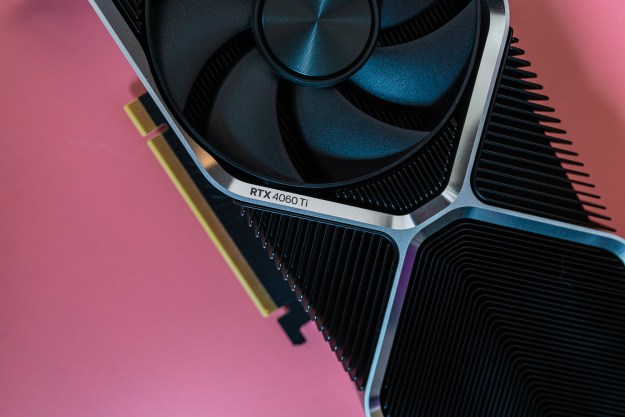AMD finally unveiled its highly anticipated Radeon RX 7800 XT and the RX 7700 XT desktop GPUs. Successors to the RX 6700 XT and the RX 6800 XT, the two new graphics cards sit comfortably between AMD’s top-end RX 7900 XTX/RX 7900 XT and entry-level RX 7600. Expanding the RDNA 3 lineup, both are claimed to offer the best 1440p gaming experience. But how do they compete against Nvidia’s offerings?
In this article, we are going to compare the RX 7700 XT with the highly controversial Nvidia RTX 4060 Ti. Make sure that you also take a look at our comparison of the RX 7800 XT versus the Nvidia RTX 4070.
Pricing and availability
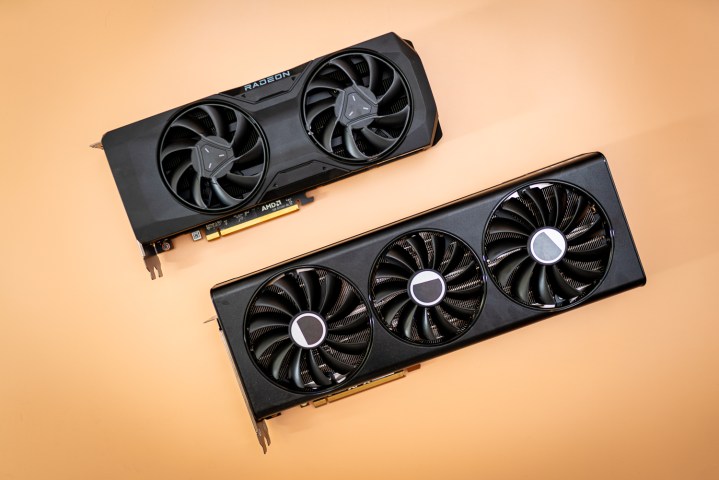
The new Radeon RX 7700 XT was announced (alongside the RX 7800 XT) on August 25. It is available for purchase starting September 6 from leading board partners including ASRock, ASUS, Biostar, Gigabyte, PowerColor, Sapphire, Vastarmor, XFX, and Yeston. Pricing for the GPU starts at $450 which is $50 more than the 8GB Nvidia RTX 4060 Ti.
On the other hand, the RTX 4060 Ti was launched on May 24 at a starting price of $400. Available from a variety of board partners, it is the only card under the 4060 lineup that is also available as a first-party Founders Edition. Then there is also a 16GB version, which offers the same features but with double the amount of VRAM for between $450 and $530.
Specs

Here’s a look at how the two GPUs stack up against each other:
| AMD RX 7700 XT | Nvidia RTX 4060 Ti | |
| AI cores/accelerators | 108 | 128 |
| RT cores/accelerators | 54 | 32 |
| Base clock | 2,171MHz | 2,310MHz |
| Maximum clock | 2,544MHz | 2,540MHz |
| Memory | 12GB GDDR6 | 8GB GDDR6 |
| Memory speed | 18Gbps | 18Gbps |
| Memory bus | 192-bit | 128-bit |
| Power | 245W | 160W |
Apart from offering more VRAM, the RX 7700 XT offers a higher count of ray tracing accelerators and a wider memory bus (192-bit vs. 128-bit). The higher memory can make a huge difference in terms of performance especially considering how modern games rely heavily on the amount of VRAM. The core counts aren’t worth comparing between two different architectures.
The RTX 4060 Ti does, however, offer dedicated Tensor or AI cores for better deep learning tasks, and at the same time consumes considerably less power than the RX 7700 XT.
Performance

To have a better understanding of how the new RX 7700 XT competes with the RTX 4060 Ti, we’ve tested the two GPUs in a variety of games at 1080p and 1440p resolutions. We also ran 3DMark Port Royal and Time Spy synthetic benchmarks for good measure. Do note that our testing included the 8GB variant of the RTX 4060 Ti, which means that you can expect a performance bump with the 16GB version in VRAM-limited games like Resident Evil 4 and The Last of Us Part One.
Beginning with games at 1440p resolution, the RX 7700 XT clearly lived up to AMD’s claims. It consistently offered higher average frame rates than the RTX 4060 Ti in every game that we tested. The biggest difference was in Forza Horizon 5 where the RX 7700 XT offered 140 frames per second (fps) while the 4060 Ti was close to 120 fps.

Ray tracing is a feature where AMD hasn’t been able to keep up with Nvidia, but it seems that we finally have some competition. In Resident Evil 4 and Metro Exodus, the RX 7700 XT offered better average frame rates and was pretty much on par with the RTX 4060 Ti in Cyberpunk 2077 and Returnal.
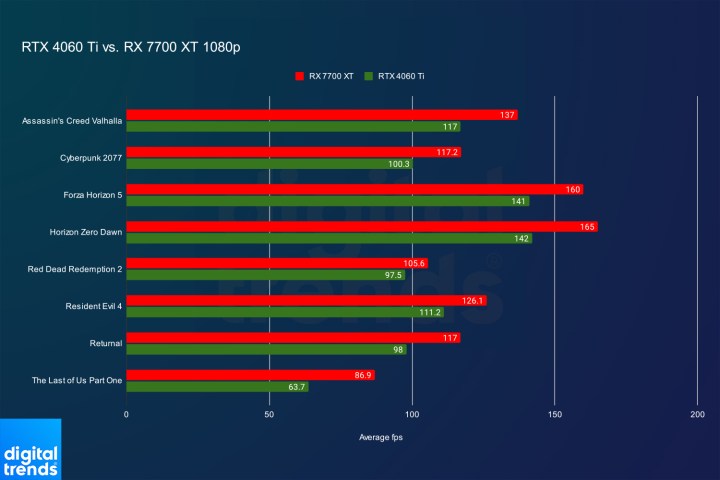
At lower 1080p resolution, the story remains the same where the RX 7700 XT outperforms the RTX 4060 Ti in all the games. Even games with ray tracing saw AMD’s new GPU performing much better than expectations, similar to 1440p.
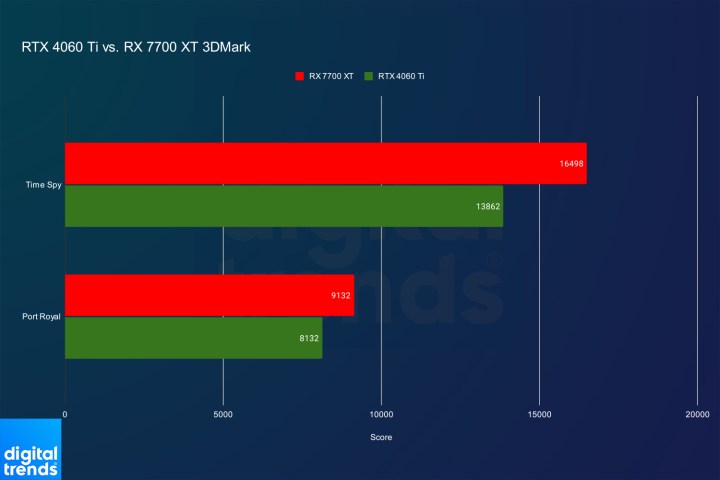
Finally in 3DMark’s Port Royal ray tracing test, the RX 7700 XT scored a thousand points higher than the 4060 Ti, which is a huge difference and proof that AMD has definitely put in the effort to improve ray tracing performance on its new GPUs. Even in 3DMark Time Spy, the 4060 Ti scored 13,862 points which is way behind the RX 7700 XT that scored 16,498 points.
Which one should you choose?
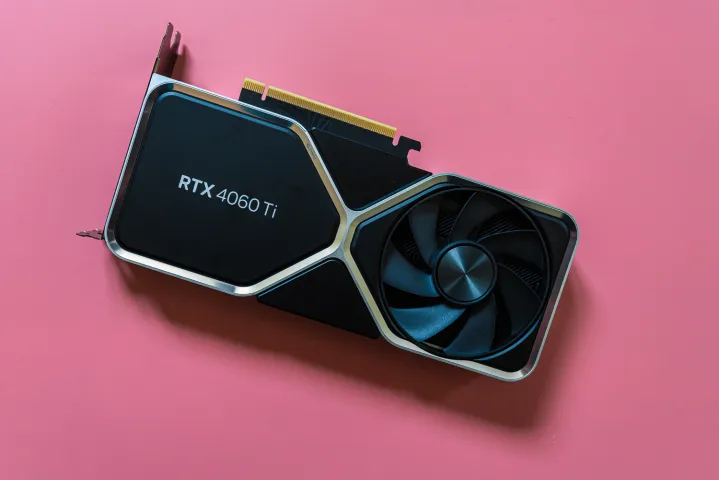
Nvidia’s RTX 4060 Ti has been a disappointment even before it was officially launched. The fact that it offers so little for the asking price has been one of the biggest reasons why consumers are not really buying the mid-range GPU. In our testing, we found that it delivers a 16% generational jump over the RTX 3060 Ti in 4K benchmarks. While it does perform marginally better in some games, it performed worse than its predecessor in titles like Hogwarts Legacy and The Last of Us Part One.
AMD’s new RX 7700 XT is a clear winner here, despite its higher price tag. The GPU performs significantly better than the RTX 4060 Ti in both 1440p and 1080p resolutions, making it a sound choice for a wide range of gamers. The GPU also has ray tracing chops, offering similar and sometimes better ray tracing performance than the RTX 4060 Ti.
Additionally, during the launch event, AMD gave a sneak peek of FidelityFX Super Resolution 3 (FSR 3) with a showcase of Forspoken gameplay. The game was running at 1440p resolution, at ultra-high settings, and ray tracing enabled. Impressively, when combined with native anti-aliasing, anti-lag, and AMD’s fluid motion frames, FSR 3 substantially increased the frame rates from 64 fps to a remarkable 106 fps. It will be interesting to see FSR 3 in action and to gauge how it stacks up against Nvidia’s DLSS 3.5.
While AMD has yet to officially announce the release date for FSR 3, it could arrive shortly after its new RX 7700 XT and 7800 XT GPUs hit the shelves. Nvidia’s impressive DLSS 3 feature is already available, and it’s supported on the RTX 4060 Ti.
Editors' Recommendations
- You shouldn’t buy these Nvidia GPUs right now
- The Nvidia RTX 4080 Super just trounced AMD
- This underrated AMD GPU beats the RTX 4070 Ti Super
- I tested AMD’s RX 7600 XT against the RTX 4060 — and I was shocked by the results
- Here’s how AMD counters Nvidia’s big RTX Super launch





